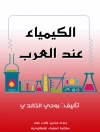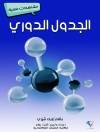The development of new drugs is very complex, costly and risky. Its success is highly dependent on an intense collaboration and interaction between many departments within the drug development organization, external investigators and service providers, in constant dialogue with regulatory authorities, payers, academic experts, clinicians and patient organizations. Within the different phases of the drug life cycle, drug development is by far the most crucial part for the initial and continued success of a drug on the market.
This book offers an introduction to the field of drug development with a clear overview of the different processes that lead to a successful new medicine and of the regulatory pathways that are used to launch a new drug that are both safe and efficacious.
‘This is the most comprehensive and detailed book on drug development I have ever read and I feel that it is likely to become a staple of drug development courses, such as those taught at Masters Level in my own University…. I think in the light of increasing integration of company and academic approaches to drug development both sides can read this book… (and, therefore)… this book could not be more timely.’
–Professor Mike Coleman, University of Aston, UK ( from his review of the final manuscript)
Table of Content
Series Foreword ix
Preface xi
Acknowledgement xiii
Abbreviations xv
Introduction xxi
1 Drug Life Cycle 1
1.1 Introduction 1
1.2 Drivers of the search for a new drug 2
1.3 Structure of a drug life cycle 5
1.4 Costs and risks of drug research and development 6
1.5 Risk of drug R&D 7
1.6 Value for patient and society 9
1.7 The end of a drug’s life 9
1.8 Management 10
References 10
2 Drug Discovery and Design 13
2.1 Introduction 13
2.2 Approaches in drug discovery 14
2.3 The drug discovery process 17
References 21
3 Drug Development: General Aspects 23
3.1 Introduction 23
3.2 The objective of drug development 23
3.3 Drug development organisations and teams 24
3.4 Drug development streams 27
3.5 Phases in drug development 36
3.6 Regulatory environment 44
3.7 Quality management 58
3.8 Project risk management 75
3.9 Ethical considerations 79
References 88
4 Methods and Techniques Used in Drug Development 91
4.1 Introduction 91
4.2 Chemical and pharmaceutical development 91
4.3 Non-clinical development 106
4.4 Clinical development 139
References 166
5 The Early Development of a New Drug 169
5.1 Introduction 169
5.2 Preclinical phase 170
5.3 Clinical phase 200
References 251
6 The Late Development of a New Drug 253
6.1 Introduction 253
6.2 Pre-approval development 254
6.3 Marketing authorisation 316
6.4 Post-approval development 328
References 347
7 Special Drug Developments 351
7.1 Introduction 351
7.2 Development of orphan drugs 351
7.3 Paediatric drug development 354
7.4 Geriatric drug development 356
7.5 Development of fixed-dose drug combinations 358
7.6 Other special drug developments 360
References 360
8 Drug Commercialisation 361
8.1 Introduction 361
8.2 Market access 363
8.3 Pharmaceutical marketing 370
8.4 Independent drug information 382
8.5 Rational use of medicines 383
References 384
Epilogue 387
Index 391
About the author
Jan A. Rosier, Professor, Faculty of Pharmaceutical Sciences, University of Leuven/Cranfield, School of Management.
Mark Martens, Belgium; Toxicologist.
Josse Thomas, Belgium; Guest Profrssor Leuven and Université de Liège, Belgium).












